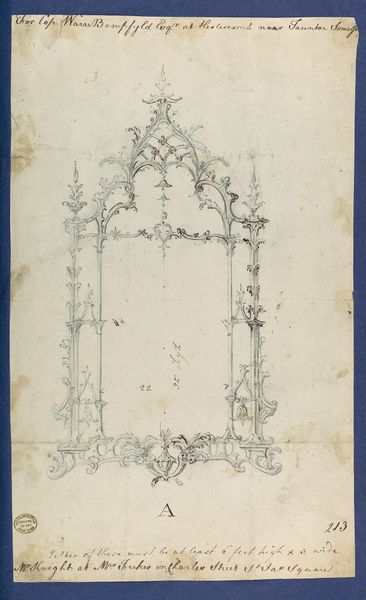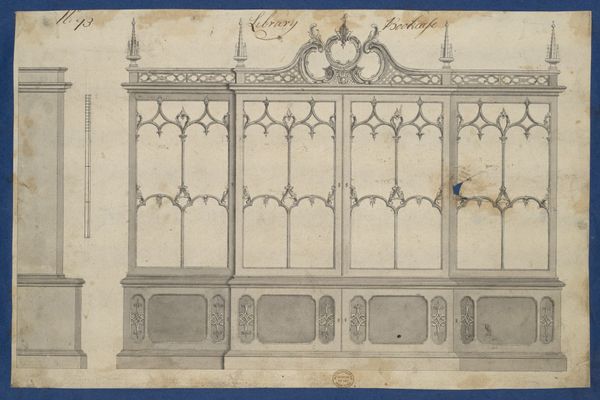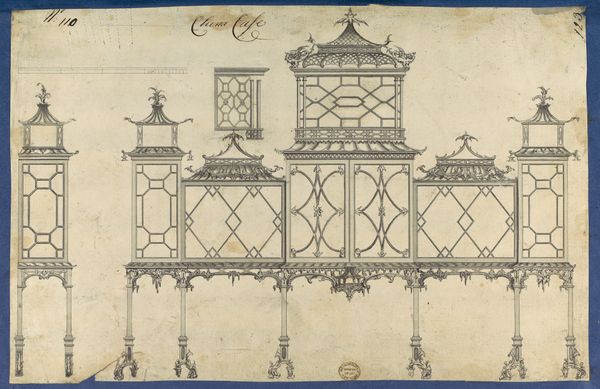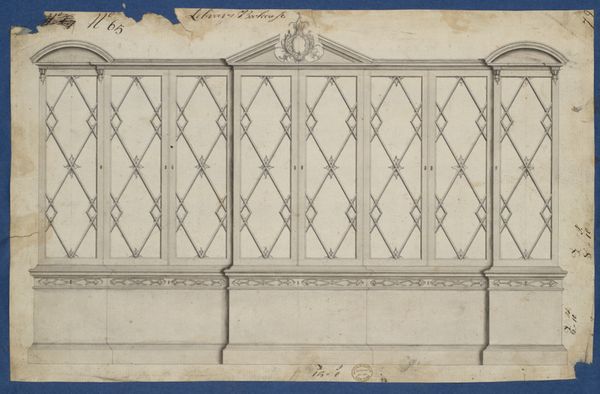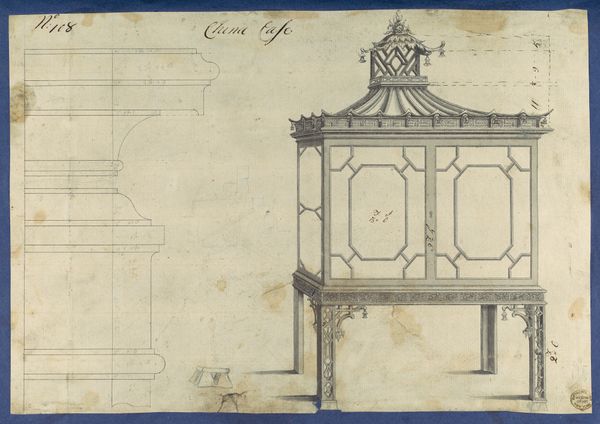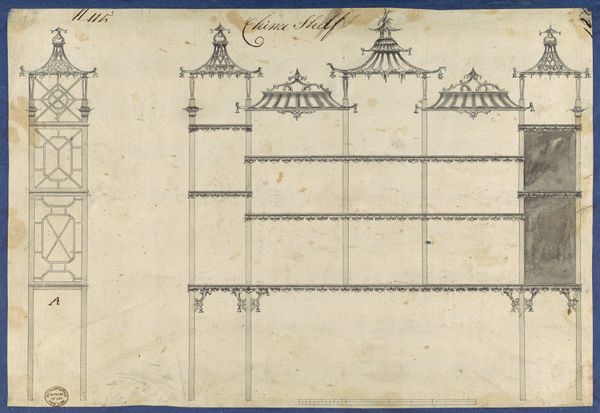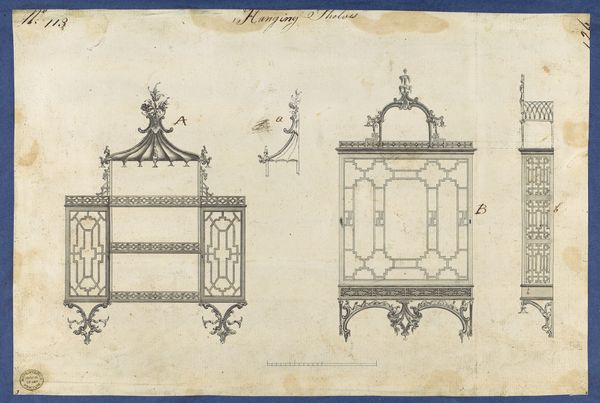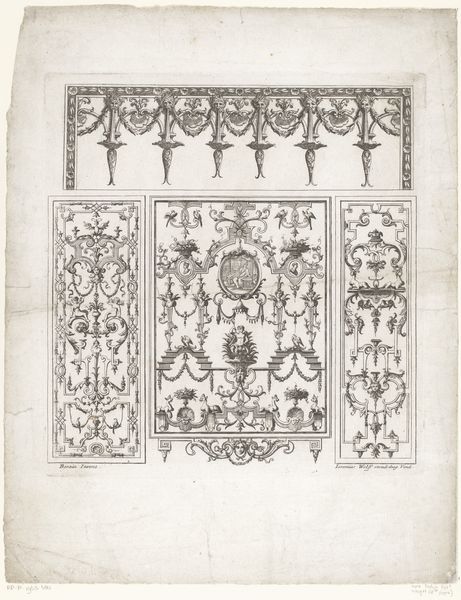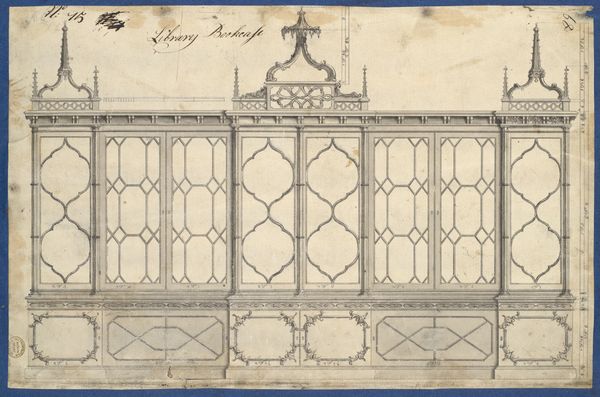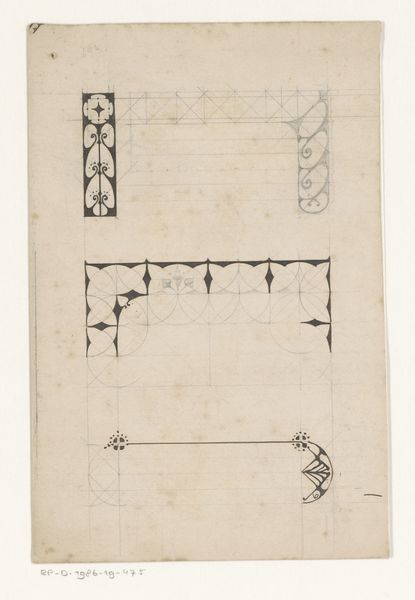
China Shelf, from Chippendale Drawings, Vol. II 1753
0:00
0:00
drawing, print, pencil
#
drawing
#
neoclacissism
# print
#
geometric
#
pencil
Dimensions: sheet: 9 x 13 1/8 in. (22.9 x 33.3 cm)
Copyright: Public Domain
Curator: Here we have a pencil drawing entitled "China Shelf, from Chippendale Drawings, Vol. II," created by Thomas Chippendale around 1753. Editor: Immediately, I see echoes of pagodas and lattice work; it feels like a visual bridge between cultures. What exactly was he thinking when he drew this, I wonder? Curator: Chippendale was designing furniture during a time of fervent trade with the East, so this design is deeply enmeshed in consumerism and material exchange, driven by the fashionable desire for chinoiserie. His shop became known for crafting ornate display shelves precisely like this to show off imported goods like porcelain. Editor: So, it's about status, about having the financial power to acquire exotic objects? The shelves themselves become symbols of that acquisition, these complex and open structures visually communicating that wealth. I wonder, was it meant to hold actual Chinese objects? Curator: Undoubtedly, though likely objects that had already passed through the lens of European understanding and valuation. Consider the materials implied in the drawing, meant to mimic the look and feel of imported lacquer work or painted silks while ultimately made of carved and gilded wood. The status resided in the skilled making and the ability to flaunt access to commodities that were very rare in the local market. Editor: That tension between mimicry and authenticity seems very relevant even today. Those repeating arch motifs along the top remind me of older church designs and certainly echo other Neoclassical shapes used to denote stability and authority, adding a very specific cultural flavor into that blend. Curator: Precisely. It's the construction, really: a mix of practical carpentry and then the flourishes, which speak to a kind of aspiration beyond pure utility. The way labor and materiality coalesce in furniture like this allows one to investigate 18th-century social mores around taste. Editor: This has given me a lot to think about regarding cultural appreciation, and appropriation. All these symbolic influences combining on this one piece are very informative on 18th-century ideas of status, trade and visual messaging. Curator: Agreed. Examining it through these dual perspectives illuminates so much more about both the artistic choices and also what it might have meant for the individual who eventually owned such a showpiece.
Comments
No comments
Be the first to comment and join the conversation on the ultimate creative platform.

